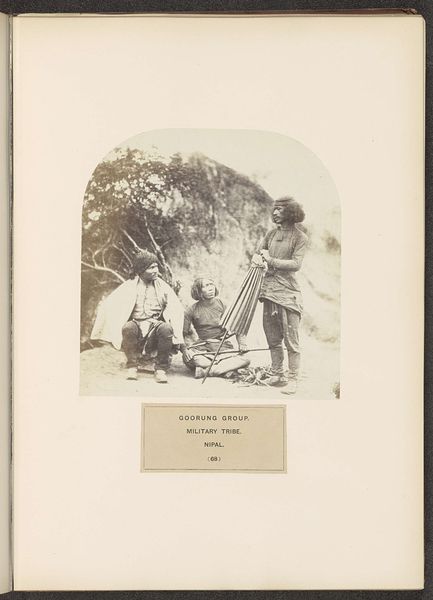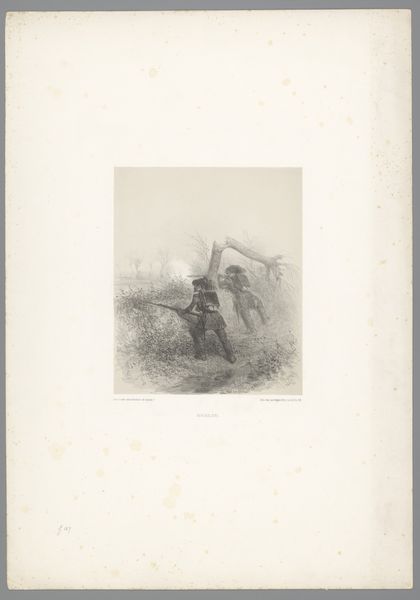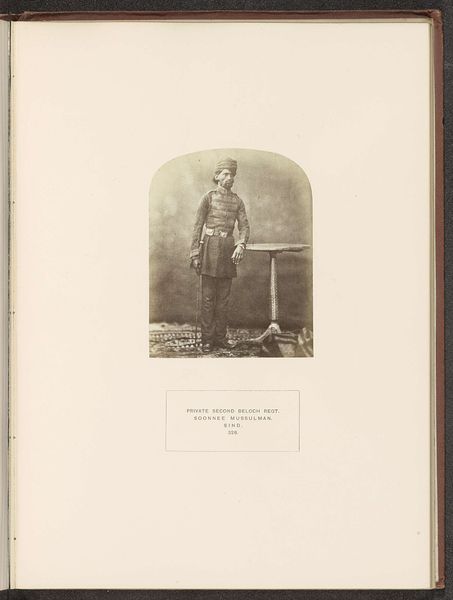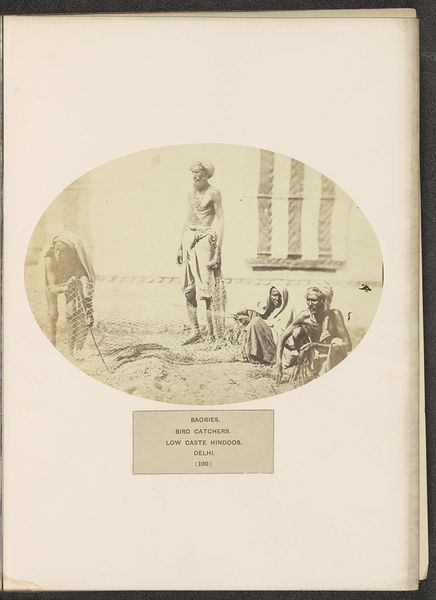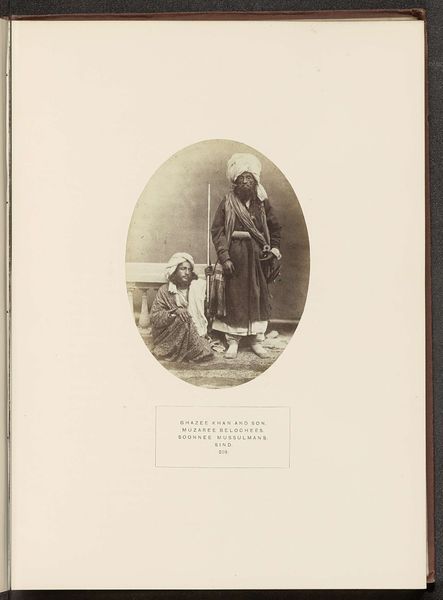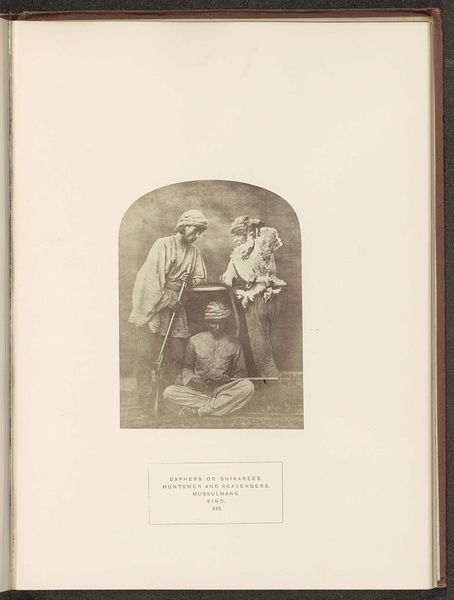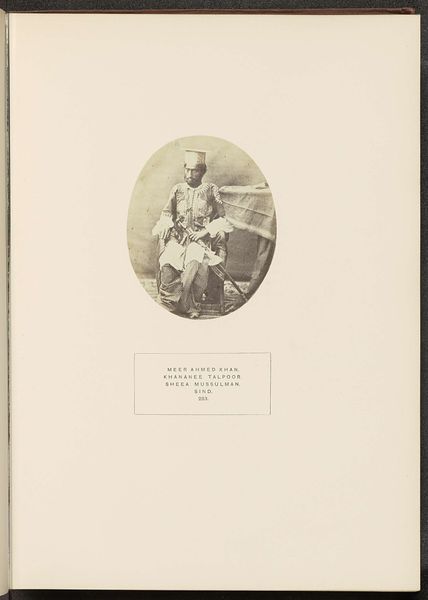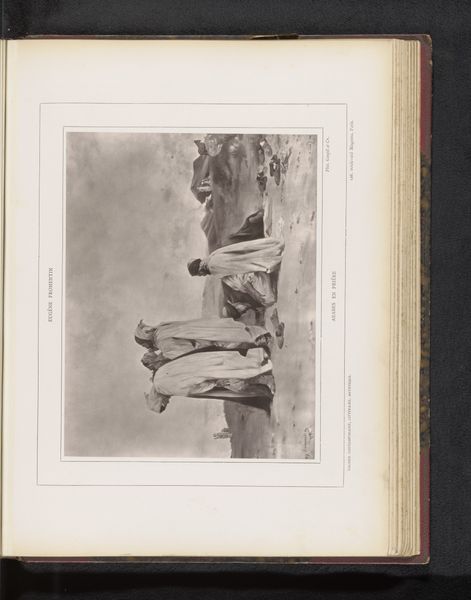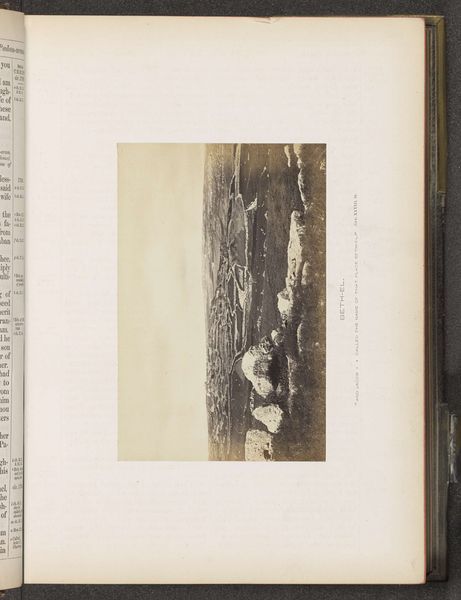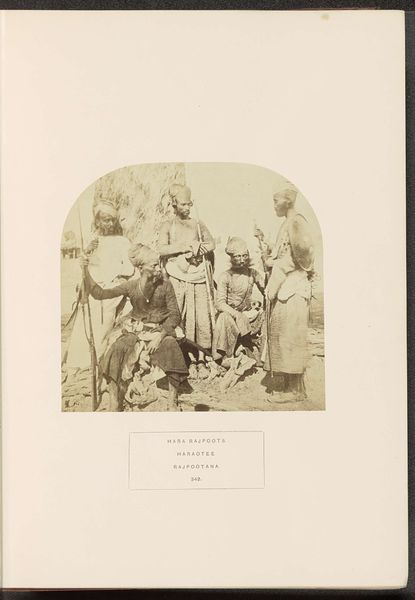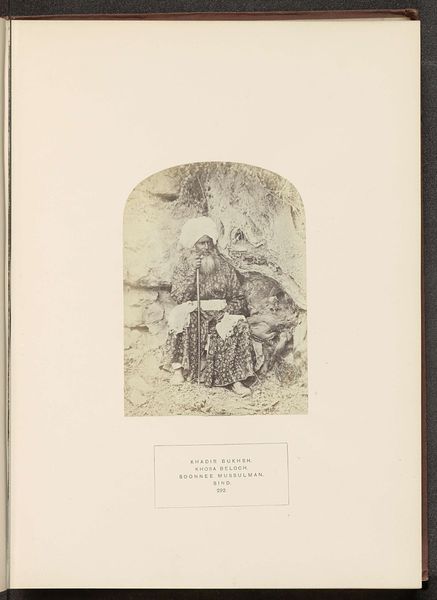
Twee Khas mannen uit Nepal op de grond met gereedschap voor de landbouw before 1868
0:00
0:00
photography
#
portrait
#
photography
Dimensions: height 129 mm, width 175 mm
Copyright: Rijks Museum: Open Domain
Curator: This photograph, titled "Twee Khas mannen uit Nepal op de grond met gereedschap voor de landbouw," attributed to Benjamin Simpson, offers us a glimpse into Nepal before 1868. What's your initial read on this image? Editor: I’m immediately drawn to the textural qualities – the roughness of the ground, the woven materials, and the men’s clothing. There is such clear evidence of the hand and labor embedded in every detail captured. Curator: Indeed. Knowing Simpson's background as a medical officer with the British Army in India, this work highlights the role of photography in documenting and often exoticizing colonial subjects. It also seems important to remember that images like these played a vital part in shaping Western perceptions. Editor: Exactly. Looking at their tools alongside what appears to be raw materials suggests a story about their production processes – their means of survival deeply rooted in the local landscape and agriculture. The photograph reveals a connection between these individuals, their labor, and their land, made visible through the composition, but only at surface level for Western viewers. Curator: I'm particularly interested in the implied power dynamics. Simpson, as an outsider, is framing this moment, directing the narrative. Consider the title itself – how might its simplicity flatten their identities and histories into generalized representations of a tribe? Editor: Right. I mean, who owned the means of photographic production here, and who controlled its circulation? It provokes complex questions about whose story gets told and how the power of the photographic medium itself is at play. The materials available for use define what is visible or rather what becomes erased from visibility. Curator: Absolutely. Thinking through that intersection of representation and access, this image provides both a historical record and a charged engagement with issues of colonial power, social documentation, and, crucially, how those intertwine. Editor: Seeing the tangible evidence of the tools, woven goods, and then this image, transforms our perspective. I start wondering if the photographic subject were offered materials, access to resources, agency in their own self-representation at all. Curator: Reflecting on these historical nuances allows us to unpack layered meanings embedded within such photographs and prompts crucial dialogues concerning identity and agency when viewed from modern perspectives. Editor: It does really open the floor to reflecting upon the relationship between material conditions and power. A reminder that even something that seems simple can be packed with significance once we acknowledge the context.
Comments
No comments
Be the first to comment and join the conversation on the ultimate creative platform.
